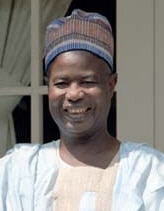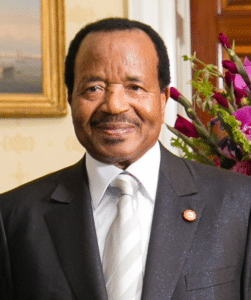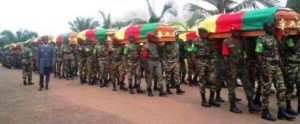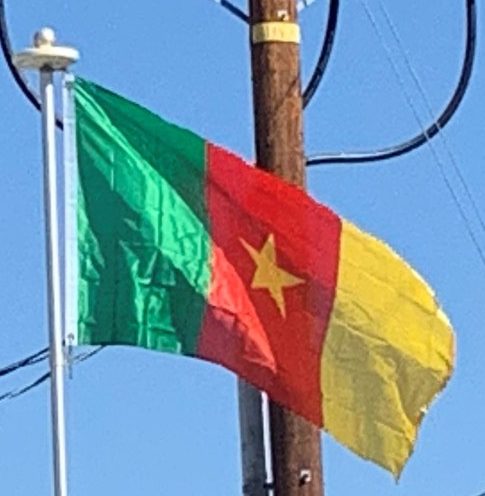
His political party, the Cameroon National Union (CNU), became the sole legal political party on 1 September 1966 and on 20 May 1972, a referendum was passed to abolish the federal system of government in favor of a United Republic of Cameroon, headed from Yaoundé. This day is now the country’s National Day, a public holiday. Ahidjo pursued an economic policy of planned liberalism, prioritizing cash crops and petroleum development. The government used oil money to create a national cash reserve, pay farmers, and finance major development projects; however, many initiatives failed when Ahidjo appointed unqualified allies to direct them.
Ahidjo stepped down on 4 November 1982 and left power to his constitutional successor, Paul Biya. However, Ahidjo remained in control of the CNU and tried to run the country from behind the scenes until Biya and his allies pressured him into resigning. Biya began his administration by moving toward a more democratic government, but a failed coup d’état nudged him toward the leadership style of his predecessor.

An economic crisis took effect in the mid-1980s to late 1990s as a result of international economic conditions, drought, falling petroleum prices, and years of corruption, mismanagement, and cronyism. Cameroon turned to foreign aid, cut government spending, and privatized industries. With the reintroduction of multi-party politics in December 1990, the former British Southern Cameroons pressure groups called for greater autonomy, and the Southern Cameroons National Council advocated complete secession as the Republic of Ambazonia.
21st Century:
In June 2006, talks concerning a territorial dispute over the Bakassi peninsula were resolved. The talks involved President Paul Biya of Cameroon, then President Olusegun Obasanjo of Nigeria and then UN Secretary General Kofi Annan, and resulted in Cameroonian control of the oil-rich peninsula. The northern portion of the territory was formally handed over to the Cameroonian government in August 2006, and the remainder of the peninsula was left to Cameroon 2 years later, in 2008. The boundary change triggered a local separatist insurgency, as many Bakassians refused to accept Cameroonian rule. While most militants laid down their arms in November 2009, some carried on fighting for years.
In February 2008, Cameroon experienced its worst violence in 15 years when a transport union strike in Douala escalated into violent protests in 31 municipal areas.
In May 2014, in the wake of the Chibok schoolgirl kidnapping, presidents Paul Biya of Cameroon and Idriss Déby of Chad announced they are waging war on Boko Haram, and deployed troops to the Nigerian border. Boko Haram launched several attacks into Cameroon, killing 84 civilians in a December 2014 raid, but suffering a heavy defeat in a raid in January, 2015. Cameroon declared victory over Boko Haram on Cameroonian territory in September 2018.

Since November 2016, protesters from the predominantly English-speaking Northwest and Southwest regions of the country have been campaigning for continued use of the English language in schools and courts. People were killed and hundreds jailed as a result of these protests. In 2017, Biya’s government blocked the regions’ access to the Internet for three months. In September, separatists started a guerrilla war for the independence of the Anglophone region as the Federal Republic of Ambazonia. The government responded with a military offensive, and the insurgency spread across the Northwest and Southwest regions. As of 2019, fighting between separatist guerrillas and government forces continues. Since 2016, more than 450,000 people have fled their homes. The conflict indirectly led to an upsurge in Boko Haram attacks, as the Cameroonian military largely withdrew from the north to focus on fighting the Ambazonian separatists.
Geography:
At 183,569 square miles, Cameroon is the world’s 53rd-largest country. It is slightly larger than the nation of Sweden and the state of California; Cameroon is comparable in size to Papua New Guinea. The country is located in Central and West Africa, known as the hinge of Africa, on the Bight of Bonny, part of the Gulf of Guinea and the Atlantic Ocean.
